In the newest installment of our invisible effects series, we delve into the production of several TV and film productions – from the on-set effects supervision for Under the Dome to the eerie effects in The Conjuring, the practical and digital make-up in Falling Skies, magic from The Incredible Burt Wonderstone, creating a post-war feel in the Emperor and delivering seamless work for Magic City.
The importance of on-set effects supervision – Under the Dome
Under the Dome has been the hit of the summer in the US for TV network CBS. It’s also a show that has required a fast visual effects turnaround from Encore to help tell the story of a small town cut off from the world by a mysterious barrier – the dome.
With filming taking place in Southport and Wilmington, North Carolina, Encore’s visual effects supervisor Stephan Fleet brought on a second supe, Adam Avitabile, to assist with the effects effort between on-set and post production. In the series so far, Encore’s work has ranged from realizing crashing planes and trucks, missile explosions, a wall of butterflies, interaction with the dome itself and…sliced cows.
Fleet says his pitch for the show’s VFX was based on the original cover of the Stephen King novel. “The book cover features this image of the dome and I knew that that was the image everybody would assume it would look like for the show, but I also knew they would like something slightly more realistic.”
– Above: watch a preview clip from Under the Dome.
“So I did some experimentation,” adds Fleet. “I bought some plexiglass and I took photos of peoples hands pressed up against it and went into Photoshop and erased all the reflections and dirt and left just a hand in space pressed into nothing. My pitch was, what is the dome? What is the least amount we need to see it? I strongly believed that less is more. That started a great conversation right there and it was already like a production meeting at the pitch.”
Ultimately, in the show the dome remains transparent but its effect can sometimes be seen as having a frosted look when touched. To ensure proper interaction on set, the visual effects team relied on Lexan – a high grade plastic that looks like glass – to shoot various scenes. “We try and eliminate as many reflections as we can practically,” says Fleet. “We try and clean it as much as possible and then in post we do a ton of dirt and reflection removal on the glass and erase the frames holding the Lexan.”
Another on-set necessity for visual effects has been the taking of spherical HDRIs in order to re-create lighting set-ups. In the past, Fleet has used the traditional tools of a tripod, nodal head and a remote control. But for Under the Dome, he wanted a faster solution especially for the required speed of a television set. “I found a YouTube video of a guy doing, not HDRIs, but regular spherical photos, and he used a plumb bob that you can buy at a Home Depot-type store for $7 and some string,” recalls Fleet. “He tied it onto the lens and looked down at the ground and spun around, and used it to keep his camera centered. So I tried that and it works great.” See that video – the pumb bob section starts about 1 min in.
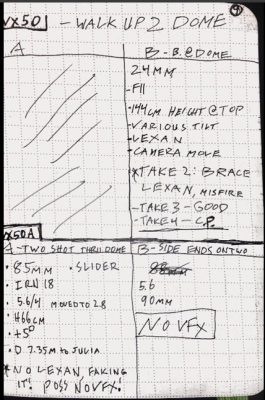
“The Canon MkIII can do seven brackets,” adds Fleet, “so I programmed some presets and low and behold I was actually able to do HDRIs by hand very quickly with no extra things – just $8 worth of gear. Also, I use the Canon 8mm zoom fisheye, which allows me to go from F4 to F22, this is helpful because I can shoot at a skinnier aperture in daylight, allowing more flexibility with my shutter speeds.” The images are stitched together with PTGui, which also enables Fleet to create a ‘Google Streetview’ type web-app for his visual effects teams to peruse the set-up from the day of shooting.
Yet another useful on-set tool turned out to be Fleet’s Moleskine notebooks which he uses to convey technical information to the crew and post-production teams. “Moleskine also came out with these Evernote Moleskins where you take a photo with your phone and it formats it perfectly and you can stick it into a digital Evernote notepad,” says Fleet. “I used to have to type up all my notes and now I just photograph them. With Evernote I can create a link to just drop all my notes into and people can check it. Everybody has all my notes all the time, right out of my book.”
That kind of technical notetaking is, of course, an essential part of being an on-set visual effects supervisor. Another is the ability to respond quickly to challenges during filming, such as where Fleet had to jump in to do an all-CG shot of a truck crashing into the dome. “This was intended to be a practical effect,” says Fleet. “The special FX guys did a great job of building this complex rig and taking a real truck which was supposed to drive and smash into pieces. And we were going to augment it.”
“Unfortunately due to time constraints we weren’t able to test the rig, so we only had one shot at it. That one shot really didn’t crush as much as everybody wanted it to. We tried to take the practical element and make it crush more, but we found the best solution was to erase it and completely redo it. So it ended up being 100 per cent CG – the doors, the groceries. It was a lot of heavy sims until we got it right.”
Conjuring The Conjuring
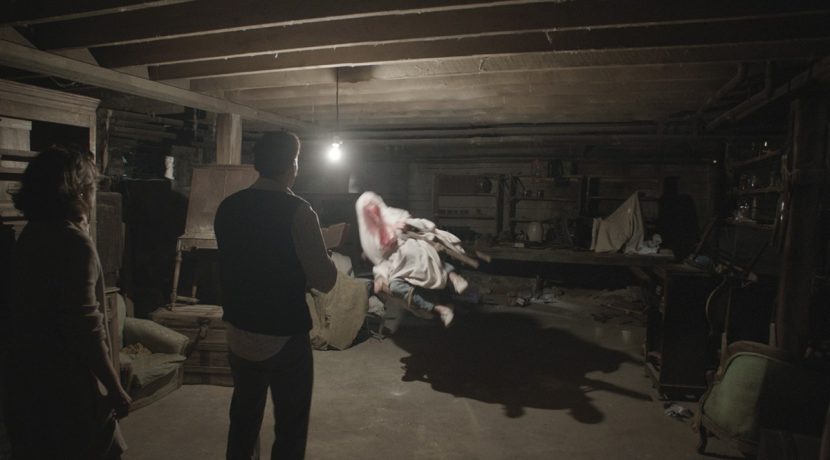 Director James Wan’s The Conjuring has been a surprise success since its release, earning more than $100m at the US box office. It tells the story of paranormal investigators exploring strange happenings at a Rhode Island farmhouse. Pixel Magic supplied the film’s haunting effects.
Director James Wan’s The Conjuring has been a surprise success since its release, earning more than $100m at the US box office. It tells the story of paranormal investigators exploring strange happenings at a Rhode Island farmhouse. Pixel Magic supplied the film’s haunting effects.
A signature shot in the pic is the ghostly sheet that wraps around a figure on a clothesline. “On the day of shooting,” recalls Pixel Magic visual effects supervisor Ray McIntyre Jnr, “the special effects crew had a sheet rigged on the clothesline. To pull it off they had this hinged plastic form pop up for it to wrap around, and then they wire-pulled it up to the window. But it was a tall order to do in the space of a half-hour required on set.”
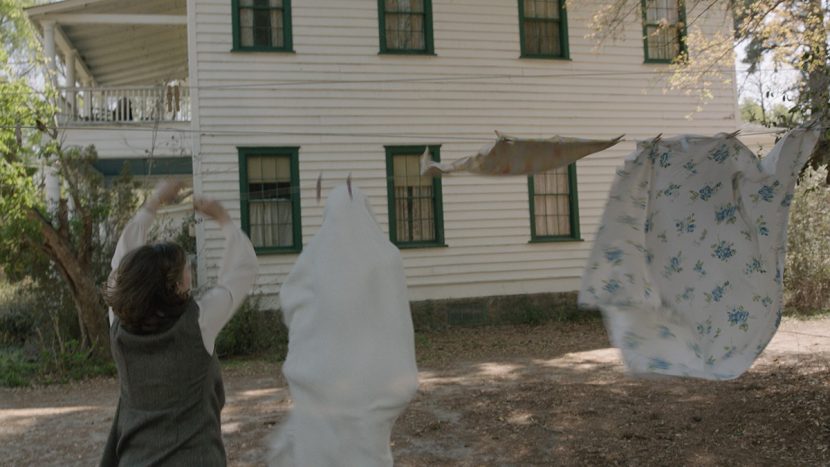
“We attempted it practically,” adds McIntyre Jnr. “Parts of it would work perfectly but all four parts wouldn’t work in one shot. So a decision was made to do it digitally. That also necessitated replacing the sheet when it’s there on the clothesline beforehand. The great thing was we had really good practical reference of what the real sheet did and the lighting changes as it went up to the window.”
Another signature shot occurs when one of the house occupants, Nancy, is lifted off the ground and slammed into a glass divider between the family and dining rooms causing the girl’s mother to react wildly – achieved as a two-take combination. “When we shot the first take, we lifted up the stuntwoman by a wire and slammed her into a piece of wall,” explains McIntyre Jnr. “The practical glass broke and the mother had no idea that was going to happen, so it scared her pretty well and so her reaction in that scene is very genuine. The rest of the take the director didn’t like. By take five we had everything else correct but we didn’t hit the glass and it didn’t break and she didn’t react like the first time. We rotoscoped and combined the two takes so that James could have her genuine reaction to the glass breaking from the first take. These were hand-held shots, with no motion control or anything and we had to add digital hair and glass.”
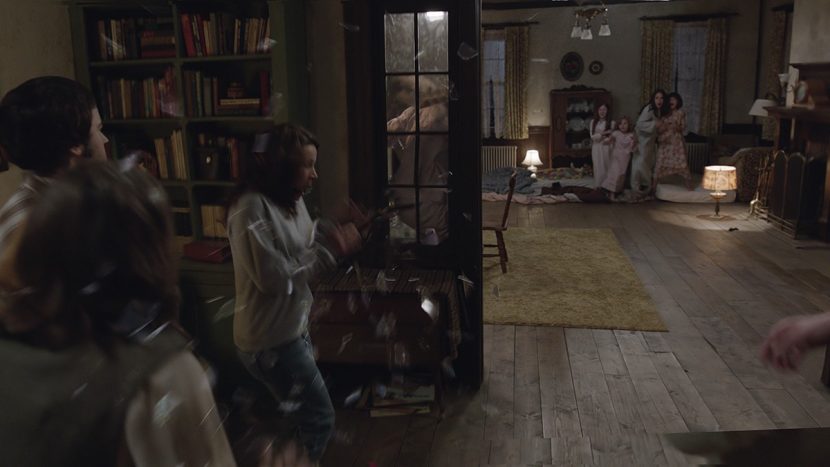
For basement scenes of a character being lifted off the ground in a chair, production filmed a rod gad and Pixel Magic had to remove a four inch metal squire pipe. “One thing that made it harder was that there was only one light, a big bulb, that was swinging from the ceiling,” says McIntyre Jnr. “So it cast a moving shadow of the rod that moved on the walls and floor. Normally you get a shadow in one position, but we had camera motion and a moving shadow.”
Additional work by Pixel Magic for the film included tracking digital bruises on an actress, digital birds supplementing an on-set puppet and another multi-take composite showing a family moving into the farmhouse. “It’s a Steadicam move that goes under the couch and into the house, through the house you meet all the family and go out the back door and one of the daughters puts up a wind chime,” states McIntyre Jnr. “That is three plates – the location house exterior front where we walk into the door, then the stage house interior where we walk out the back door of the stage, then back at the location house where we walk out the back door into the backyard.”
Merging practical and digital – Falling Skies
Oftentimes creatures in films and TV shows are realized either with practical animatronic puppets, or as digital creations, or both – especially where the creature has to run, climb walls or perform incredible stunts. Recently for Falling Skies, MastersFX tapped into the ability of CG to enhance its practical performances.
The character of Cochise, played by Doug Jones, is the culmination of what was been labeled the ‘Digital Makeup Initiative’, spearheaded by VFX artist Johnathan Banta and MastersFX founder Todd Masters.
– Above: watch a breakdown of the digital make-up effects work.
“While at Zoic I did a lot of digital makeup work and developed a lot of tech for it on Fringe,” says Banta, “and continued on the production of the upcoming movie Odd Thomas after I left. Todd and I started talking about the idea of closing the gap between digital and practical makeup during Fringe – it actually is a specialized skillset, in my opinion. Last summer we decided to start the Digital Makeup Initiative, and Cochise for Falling Skies is the result.”
On set, Doug Jones will perform the role in full prosthetic make-up, which has dialed in already a certain level of articulation. In post, specific elements of the practical make-up will be extended using several techniques. These include modifying eye direction, breathing, eye membranes and phonemes. See the side by side comparisons in the video above to check out the results.
The magic in Burt Wonderstone
Don Scardino’s The Incredible Burt Wonderstone is about magicians, but it also required wizards of the effects kind to tell its story. Rising Sun Pictures was one of the companies working overall VFX supe Bruce Jones on the film, and we take a look at some of their invisible shots.
Above: Watch Rising Sun’s breakdown reel.
In a sequence between magicians young and old (played by Steve Carrell and Alan Arkin), one of the men takes a salt shaker, unscrews the lid, taps it on the table. A dove then appears out of the shaker. “That was an actual composited element with additional CG salt,” explains Jones. “The dove flies around and hits a glass window. The bird stumbles off like a drunken sailor, which we did a CG bird. We wanted the bird and the feathers to look perfectly real but then anthropomorphized a bit so it had a little caricature to it.”
For a staring contest sequence, one of the magicians played by Jim Carrey looks to step it up a notch and have someone pepper spray his eyes – all while not blinking. “The initial thought was,” says Jones, “can we spray something in his face? But you just can’t do that without blinking. We had Jim Carrey do the performance, and then we shot elements into a black bust backlit so that I had specular hits of the water. It was good reference, but we really wanted to take it to a point where we had rivulets running down the face, droplets coming off the noise. The effects animation team did a bunch of sims and layers of water and comp’d them in.”
At one point, Steve Carrell’s character visits a hotel via cab, walks towards it only to see it implode in front of him, after which he promptly returns to the can and drive off. “Steve was shot on greenscreen,” says Jones, “and we shot a plate of this abandoned hotel, which looked like it might still be a working hotel. Then with Rising Sun we ran a number of sims to make it implode and break down on itself.”
Posting a post-war
For Emperor, a Peter Webber film set in the days following the Japanese surrender at the end of World War II, Iloura crafted several matte paintings, background enhancements, CG airplanes and other effects.
Iloura visual effects supervisor Julian Dimsey attended on set (the film was shot in New Zealand and Japan) where he was able to use only some greenscreens and employ LIDAR scanning and the use of tracking markers. “In Japan we had limited access to greenscreen as we were shooting on the grounds of the Imperial Palace, so we could only take a very small kit with us,” says Dimsey. “That meant later a lot of rotoscoping and even taking out live action trees, say, and putting digital ones in instead.”
Some shots involved recreating the bombed out streets of Tokyo. On set, the art department would try to have some practical elements for the actors to interact with, such as a vehicle, with the rest completed in CG. One scene at a naval base with General Douglas MacArthur (Tommy Lee Jones) was shot in New Zealand. “We had the New Zealand Navy park their ships along the pier we were shooting on and we used part of those ships as our period ships and used other details to take them back to the 1940s,” says Dimsey. “Tricks like that let us remove a lot of the roto. If we had just shot the pier and put digital boats in, then we would have had to roto every person and equipment. But we used the first story and bow of the real ship and added period pieces on top, including weaponry.”
“That was similar to an airfield shot,” adds Dimsey, “where we had to put the plane in digitally, but we had a real plane in there for a scale and lighting cue, and for tracking. It also meant the actors could perform around it.”
Making the magic
The Starz TV series Magic City is nearing the end of its second season. Its 1959 Miami setting means that period environments, vehicles and buildings needed to be recreated with invisible visual effects, a task accomplished by Encore.
“The less conspicuous we can be, the better,” notes visual effects supervisor Doug Ludwig. “It’s all about making those period environments look believable and complementing all the other pizazz that’s already built into the show with lavish sets and so forth.”
A major ‘player’ in the show is the fictional Miramar Playa hotel owned by lead character Ike Evans. Since the Miramar does not exist, production relied on scenes shot at the Deauville in Miami which has the necessary ballroom and lobby look. Exterior shots of the Miramar are completed by Encore as a CG and matte painting effect. “We take care to add all the little things to create movement and light in the hotel – to make it a ‘happening place’,” says Ludwig.
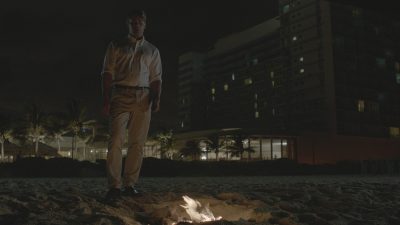
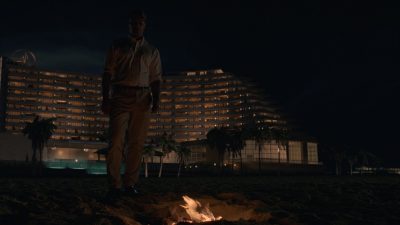
Other CG creations include period cars, home extensions and buildings, as well as outside views from the hotel. One major digital asset was a DC-3 in which Ike travels from Miami to Havana. “We shot him on the tarmac of an actual airport locally in Miami but essentially replaced everything around him,” explains Ludwig. “What makes the shot work I think is the quality of the reflections, the quality of the chrome down to every rivet. We took a lot of reference photography of the real plane and started with a previs worked out with the DOP. The production designer provided the fictitious skins representative of the kinds of fonts that were on planes at that time.”
Check out fxguide’s previous features in the invisible effects series:
Incredible, invisible effects
More incredible, invisible effects
Effects you never knew were there
A new wave of brilliant invisible effects

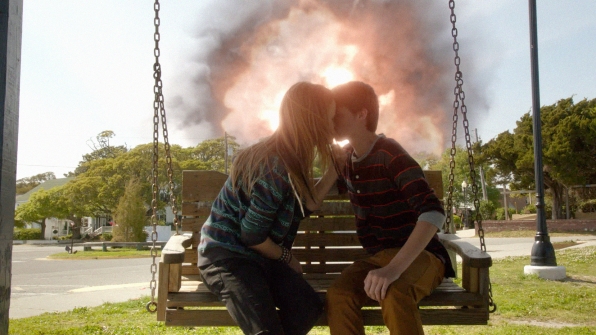
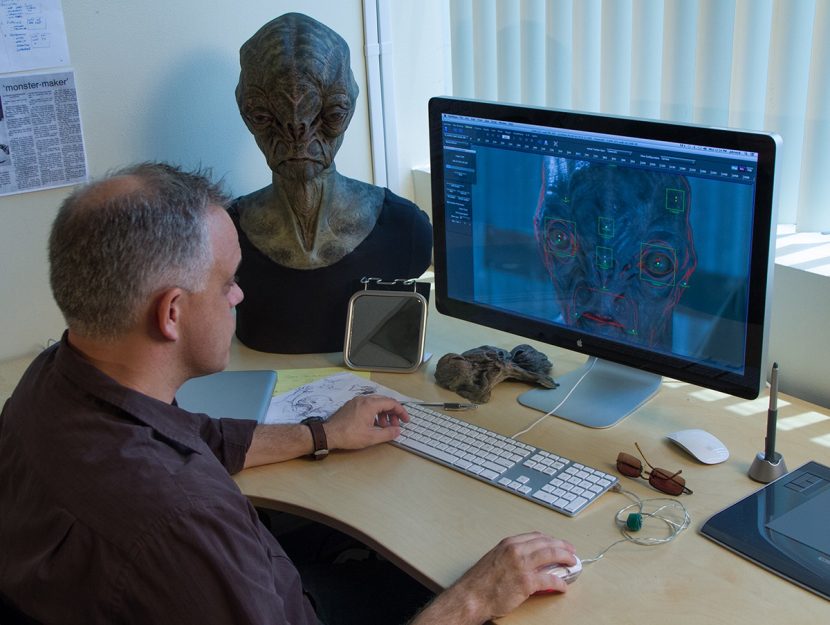
![Emperor-publicity-image_3[1]](https://www.fxguide.com/wp-content/uploads/2013/08/Emperor-publicity-image_31-830x467.jpg)
![Emperor-publicity-image_1[1]](https://www.fxguide.com/wp-content/uploads/2013/08/Emperor-publicity-image_11-830x467.jpg)
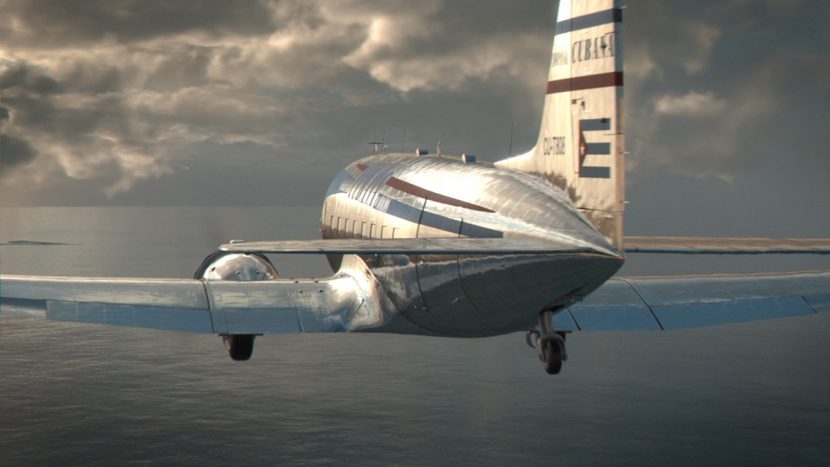
Pingback: The Digital Makeup Initiative - AGRAPHA Productions
Pingback: VFX breakdowns of a few shows and movies - wolfcrow